‘Old meets new’ in Seoul’s urban regeneration sites
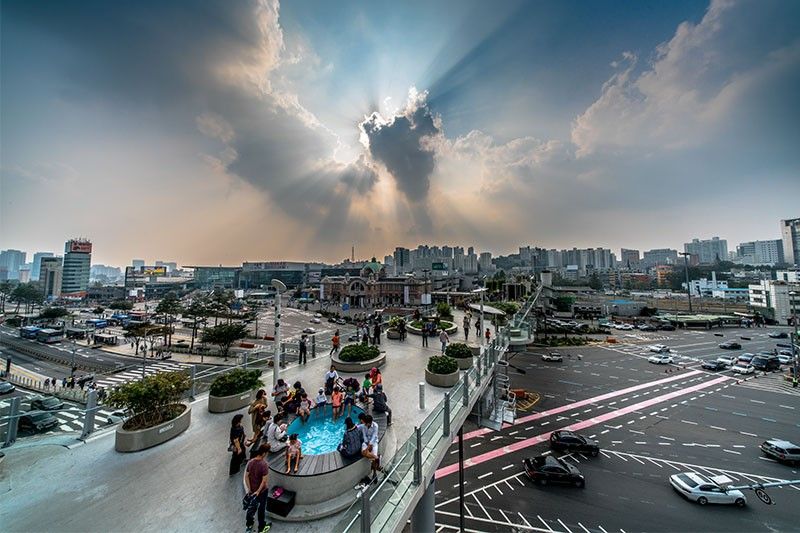
SEOUL, South Korea — From being one of the world’s poorest countries in the 1960s, South Korea has fast become one of the world’s leading technologically-advanced and digitally-connected countries.
Amid industrialization and rapid growth, South Korean capital Seoul carried out an urban regeneration project — maintaining and renovating infrastructures instead of closing or demolishing them.
With the official slogan “I.Seoul.U” signifying connectivity among Seoul and the rest of the world, the South Korean capital’s metropolitan government boasts of several urban regeneration sites that lead the trend in preserving the country’s culture in the time of urban evolution.
Oil Tank Culture Park
Five oil storage tanks in Mapo-gu, Seoul have been idle for more than 10 years before opening as a cultural park in September 2017.
The tankers, which can store 6,907 million liters of oil or a one-month supply for Seoul citizens, were built from 1976 to 1978 following the oil crisis in 1973. It was closed in the 2000s prior to the 2002 FIFA World Cup for security reasons as the stadium was built across the facility.
As the Seoul government did not know what to do with the facility, a public idea contest was held among citizens to determine how to redevelop the oil tankers, which would later on become an urban regeneration landmark of the South Korean capital.
The five tanks now stand as performance halls, exhibition halls and multipurpose pavilions while a sixth newly-built tank serves as an information exchange center and a coffee shop. An open culture yard is also located in the middle of the area, surrounded by the six cultural tanks.
KDrama fans might be familiar with the site as it was one of the filming locations of “Hwayugi” or “A Korean Odyssey.” One of the tankers, which was transformed into a glass pavilion, appeared multiple times in the drama where lead character Son Oh-Gong (Lee Seung-gi) goes to meet Soobori (Sung Ji-Ru) who represents the spiritual realm.
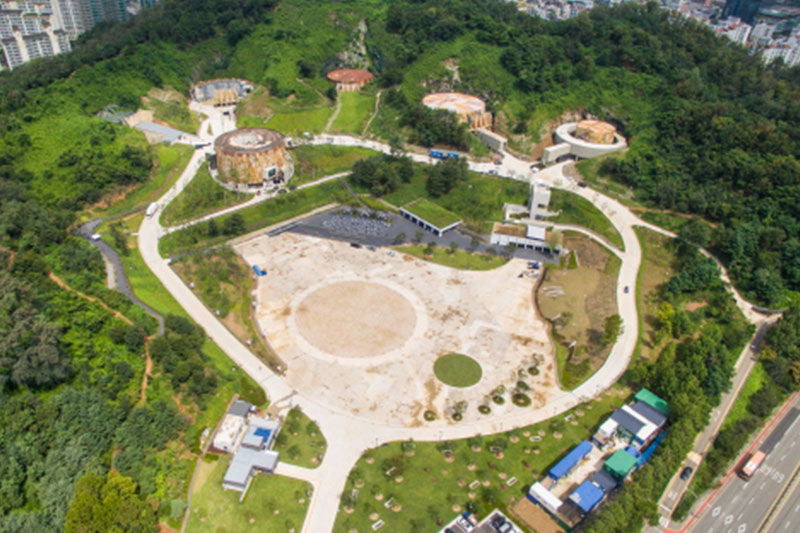 Five former oil tanks have been renovated into a exhibition halls and multipurpose pavilions with a sixth newly-built tank seving as information exchange center. The Oil Tank Culture Park in Mapo-Gu, Seoul has become a popular destination since its opening in September 2017. Seoul Metropolitan Government/Digital Chosunilbo
Five former oil tanks have been renovated into a exhibition halls and multipurpose pavilions with a sixth newly-built tank seving as information exchange center. The Oil Tank Culture Park in Mapo-Gu, Seoul has become a popular destination since its opening in September 2017. Seoul Metropolitan Government/Digital Chosunilbo
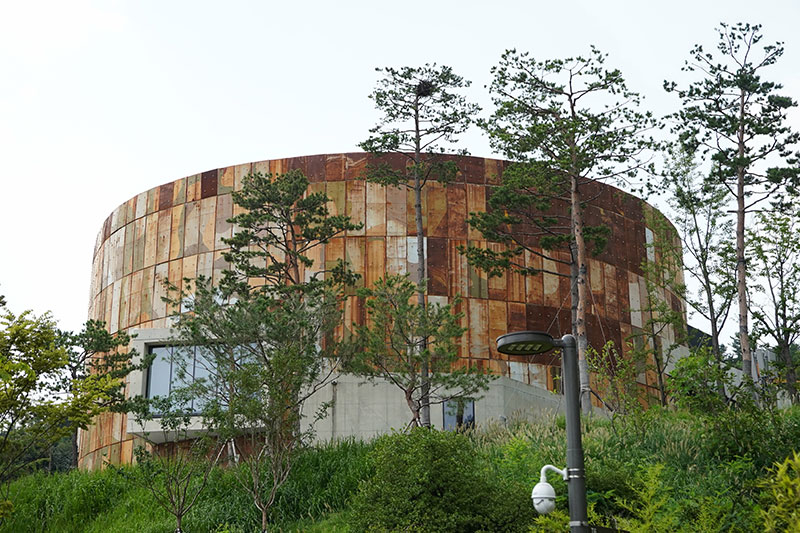 This newly-built extalishment at Oil Tank Culture Park, known as T6, serves as an information exchange center with a coffee shop on its ground floor. Seoul Metropolitan Government/Digital Chosunilbo
This newly-built extalishment at Oil Tank Culture Park, known as T6, serves as an information exchange center with a coffee shop on its ground floor. Seoul Metropolitan Government/Digital Chosunilbo
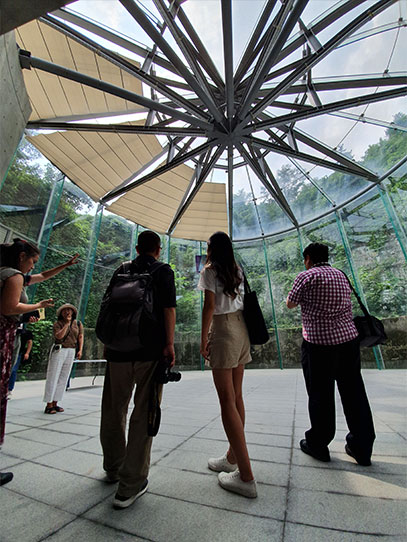 The first oil tank, known as T1, has been renovated into a glass pavilion used for exhibits and performances. Digital Chosunilbo
The first oil tank, known as T1, has been renovated into a glass pavilion used for exhibits and performances. Digital Chosunilbo
Haneul Park
What used to be a landfill for 10 million Seoul citizens and once the world’s top trash mountain now stands as an eco-friendly park filled with grasslands composed of eulalia, cogongrass, sunflowers and buckwheat.
The site was used as a landfill from 1978 to 1993, which has risen to a mountain 98 meters above sea level for 13 million tons of garbage. A stabilization project in 1996 paved the way for the restoration of the land into a park.
In 2002, the landfill formerly called Nanjido was opened as the World Cup Park consisting of four parks: Peace Park, Haneul Park, Noeul Park and Nanjicheon Park.
Haneul Park, located closest to the sky, overlooks Mt. Bukhan, Mt. Namsan and Han River. Its name meaning “sky” in Korean, Haneul Park hosts the annual Silver Grass Festival in Seoul every October when the eulalia or pampas grass is in bloom.
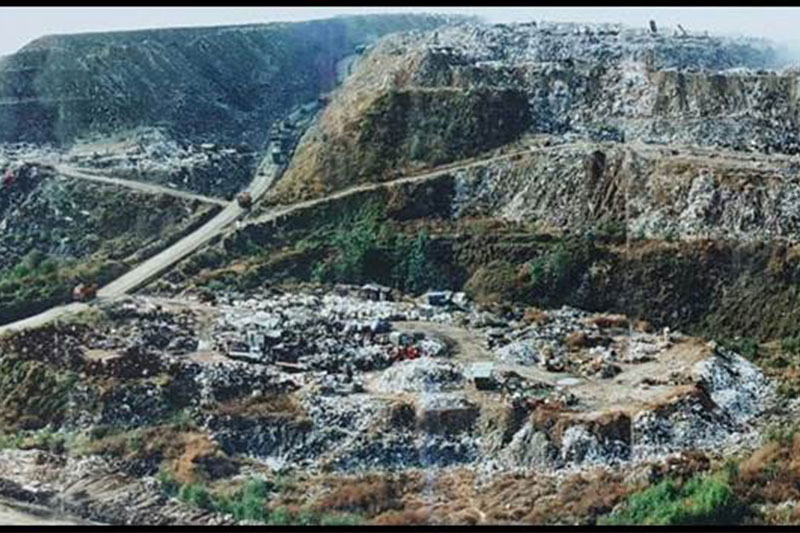 An old photo of Haneul Park as a former trash mountain in Seoul. Seoul Metropolitan Government/Digital Chosunilbo
An old photo of Haneul Park as a former trash mountain in Seoul. Seoul Metropolitan Government/Digital Chosunilbo
.jpg) A look inside one of the infrastuctures on Haneul Park, which also serves as a view deck. Philstar.com/Patricia Lourdes Viray
A look inside one of the infrastuctures on Haneul Park, which also serves as a view deck. Philstar.com/Patricia Lourdes Viray
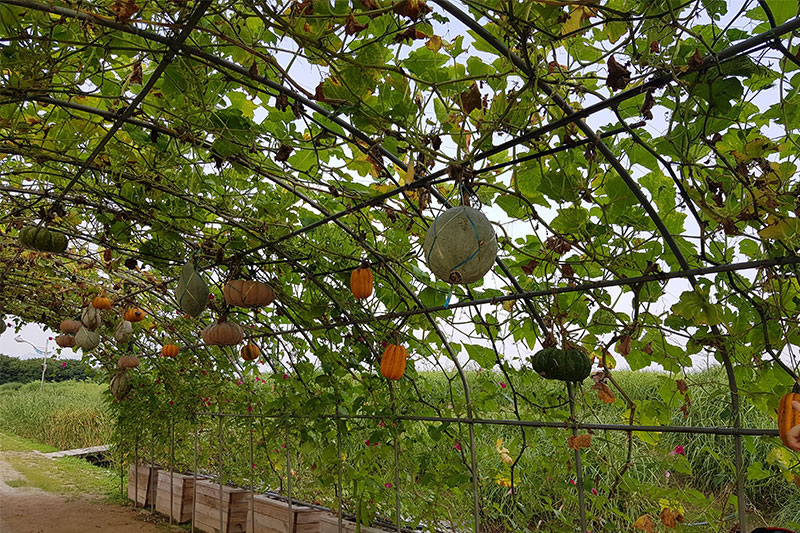 Aside from being a vast grassland, a part of Haneul Park is also a vegetable garden. Philstar.com/Patricia Lourdes Viray
Aside from being a vast grassland, a part of Haneul Park is also a vegetable garden. Philstar.com/Patricia Lourdes Viray
 Summer landscape of Haneul Park or "sky" park. Digital Chosunilbo
Summer landscape of Haneul Park or "sky" park. Digital Chosunilbo
Seoullo 7017
The Seoul Station overpass was supposed to be demolished due to safety issues brought about by increasing traffic volume since the late 1990s. Completed in 1970, the elevated road goes across from the east to the west of Seoul Station.
Too big to destroy, the Seoul Metropolitan Government held an idea generation project, where a citizen suggested transforming the road into a park just like the High Line elevated linear park in New York City.
Seoullo 7017 derives its name from “Seoul” and “lo” which meands “road,” literally meaning the “way to Seoul.” ‘70” comes from the year 1970, the year the overpass was built, and “17” from the year 2017 when the new walkway part was opened, the 17 numbers of pedestrian passages and the 17-meter length of th overpass.
Since its opening two years ago, an estimated 17 million people passed through the overpass, which also saved the business areas surrounding the establishment. The visitors of nearby Namdaemun Market increased by 20% as Seoullo 7017 encouraged people to walk.
One of Seoul’s urban regeneration projects, Seoullo 7017 has also become a place of relaxation for people passing through with several types of plants and flowers installed on the walkway. The pedestrian passage also has a space dedicated for indie bands to perform for the public.
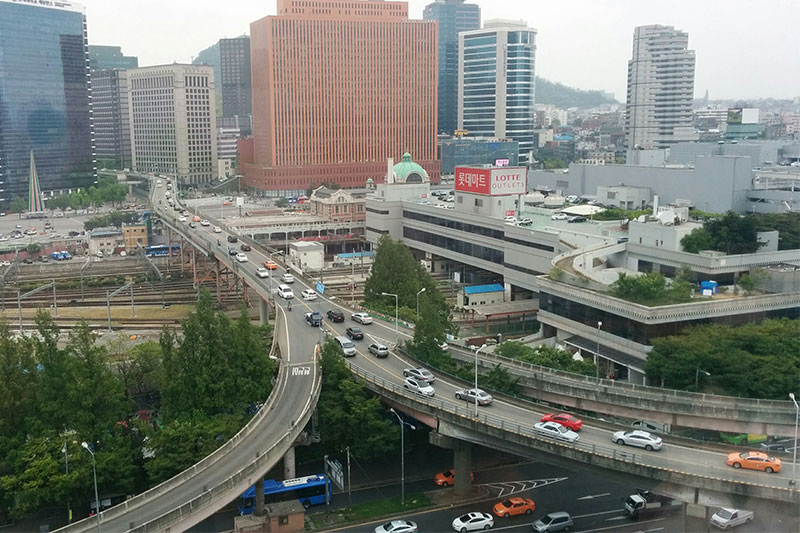 An old photo of Seoullo 7017 as a skyway in the 1970s.Seoul Metropolitan Government/Digital Chosunilbo
An old photo of Seoullo 7017 as a skyway in the 1970s.Seoul Metropolitan Government/Digital Chosunilbo
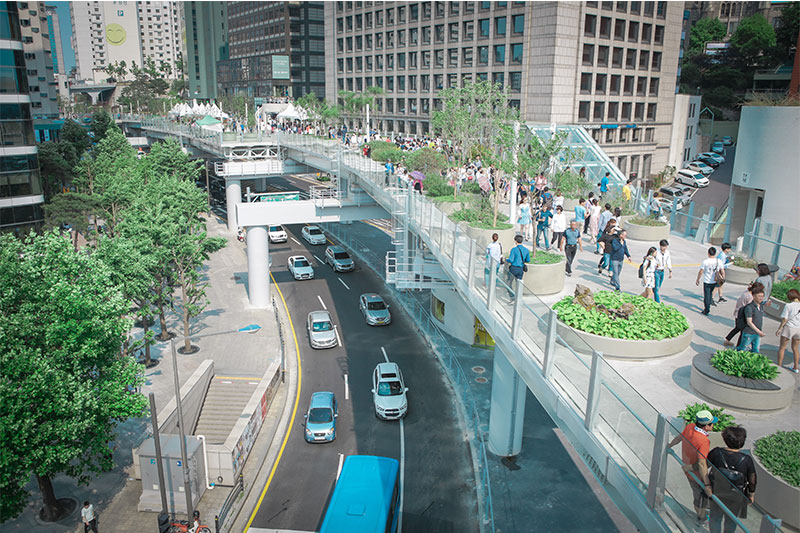 The Seoul Station overpass has been transformed into a pedestrian walkway, which opened in 2017. Seoul Metropolitan Government/Digital Chosunilbo
The Seoul Station overpass has been transformed into a pedestrian walkway, which opened in 2017. Seoul Metropolitan Government/Digital Chosunilbo
.jpg) Seoullo 7012 at night. Philstar.com/Patricia Lourdes Viray
Seoullo 7012 at night. Philstar.com/Patricia Lourdes Viray
Donuimun Museum Village
Similar to the other urban regeneration sites in Seoul, the Donuimun Museum Village was supposed to be demolished where a park should be built but the city government changed its plan to revive the “old Seoul” and renovated the buildings to its original condition.
Donuimun or Seodaemun was first established in 1396 but was closed in 1413 as it damaged the veins of Gyeongbokgung Palace, the largest royal palace built during the Joseon Dynasty. In 1915, the original village was demolished to give way to urban planning and what remains is its gate.
Village residents started remodelling their homes in the 1960s. Later on in the 1990s, these homes were again remodelled and started operating as restaurants. Those who moved out of the village after the renovations still come back and help with the shops in the area.
Recognizing the historical value of the village as the city’s first neighbourhood in the western gate of fortress wall of Seoul, the government designated the area as a cultural museum showing the history and culture of Seoul for the past 100 years.
Opened in September 2017, the Donuimun Museum Village features 16 different exhibition halls, 11 of which where visitors can experience Korean culture such as tea ceremony, Hanji craft, calligraphy, music, sewing/embroider, magic experience and others.
The museum village has become a popular tourist destination in Seoul since opening two years ago with at least 1,000 people a day visiting the village on weekdays and 3,000 a day during weekends, according to a Seoul official.
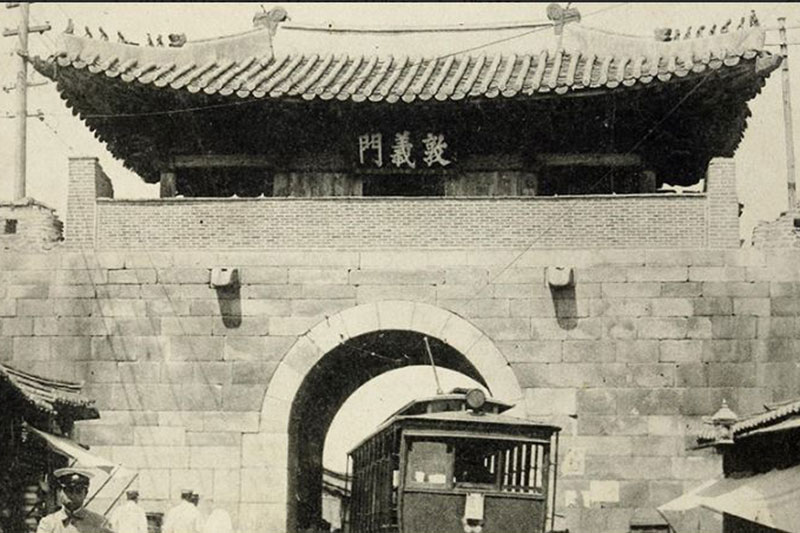 An old photo of the original gate at Donuimun Village Museum, which was once called the Saemunan neighborhood. Seoul Metropolitan Government/Digital Chosunilbo
An old photo of the original gate at Donuimun Village Museum, which was once called the Saemunan neighborhood. Seoul Metropolitan Government/Digital Chosunilbo
.jpg) The Donuimun Village Museum features 16 exhibit halls, some of which are experiential for visitors. Philstar.com/Patricia Lourdes Viray
The Donuimun Village Museum features 16 exhibit halls, some of which are experiential for visitors. Philstar.com/Patricia Lourdes Viray
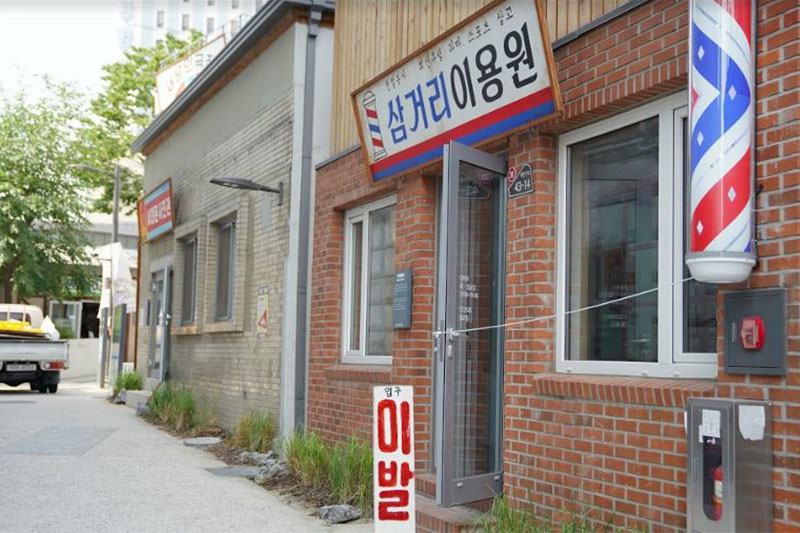 A 70s and 80s barber shop and photo studio stand at the entrance of Donuimun Village Museum. Digital Chosunilbo
A 70s and 80s barber shop and photo studio stand at the entrance of Donuimun Village Museum. Digital Chosunilbo
___
Editor's note: The tour to Seoul was hosted by Digital Chosunilbo, in partnership with Seoul Metropolitan Government's City Branding Division. At no stage does the host organization has a say on the stories generated from the coverage, interviews conducted, publication date and story treatment. Content is produced solely by Philstar.com following editorial guidelines.



















